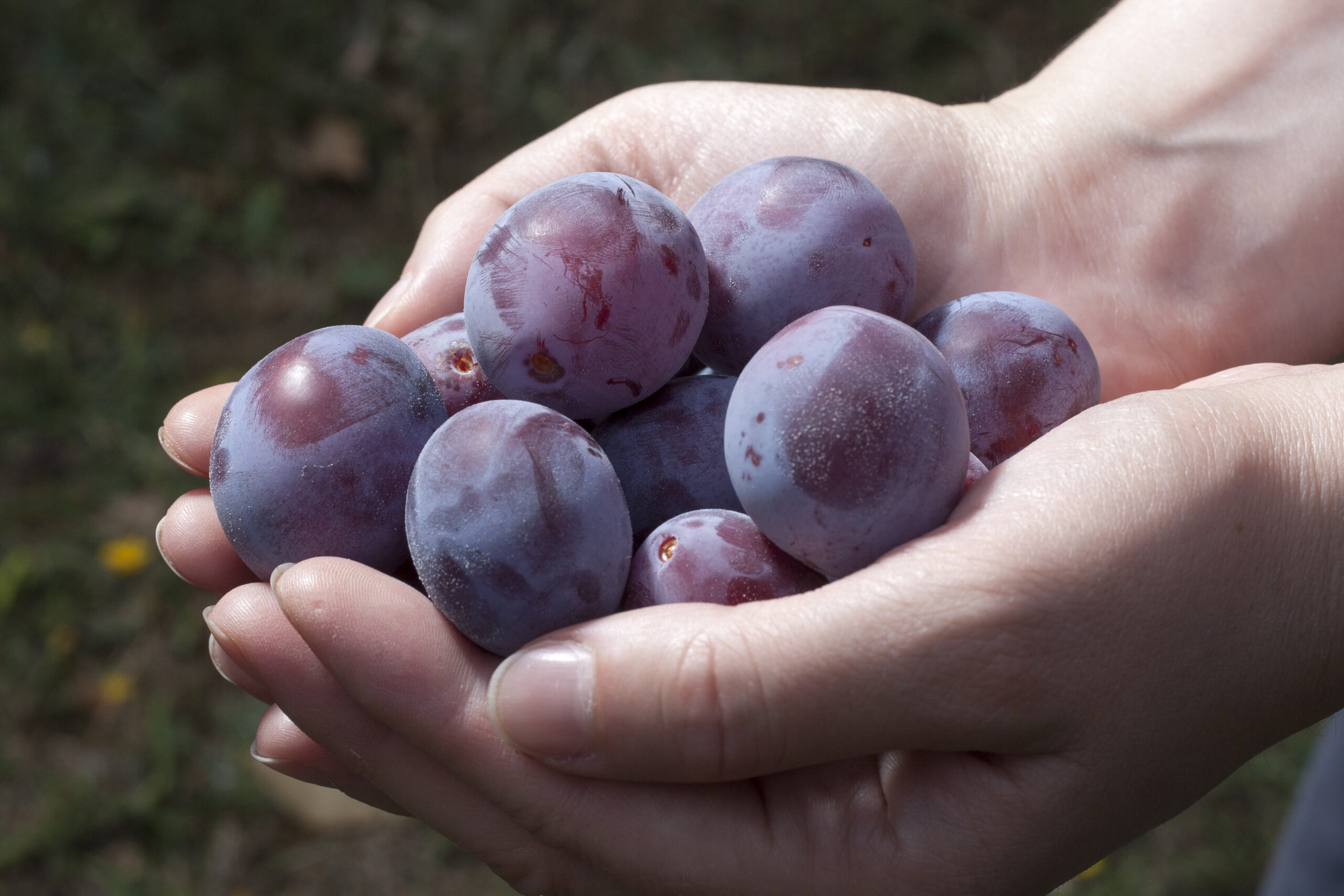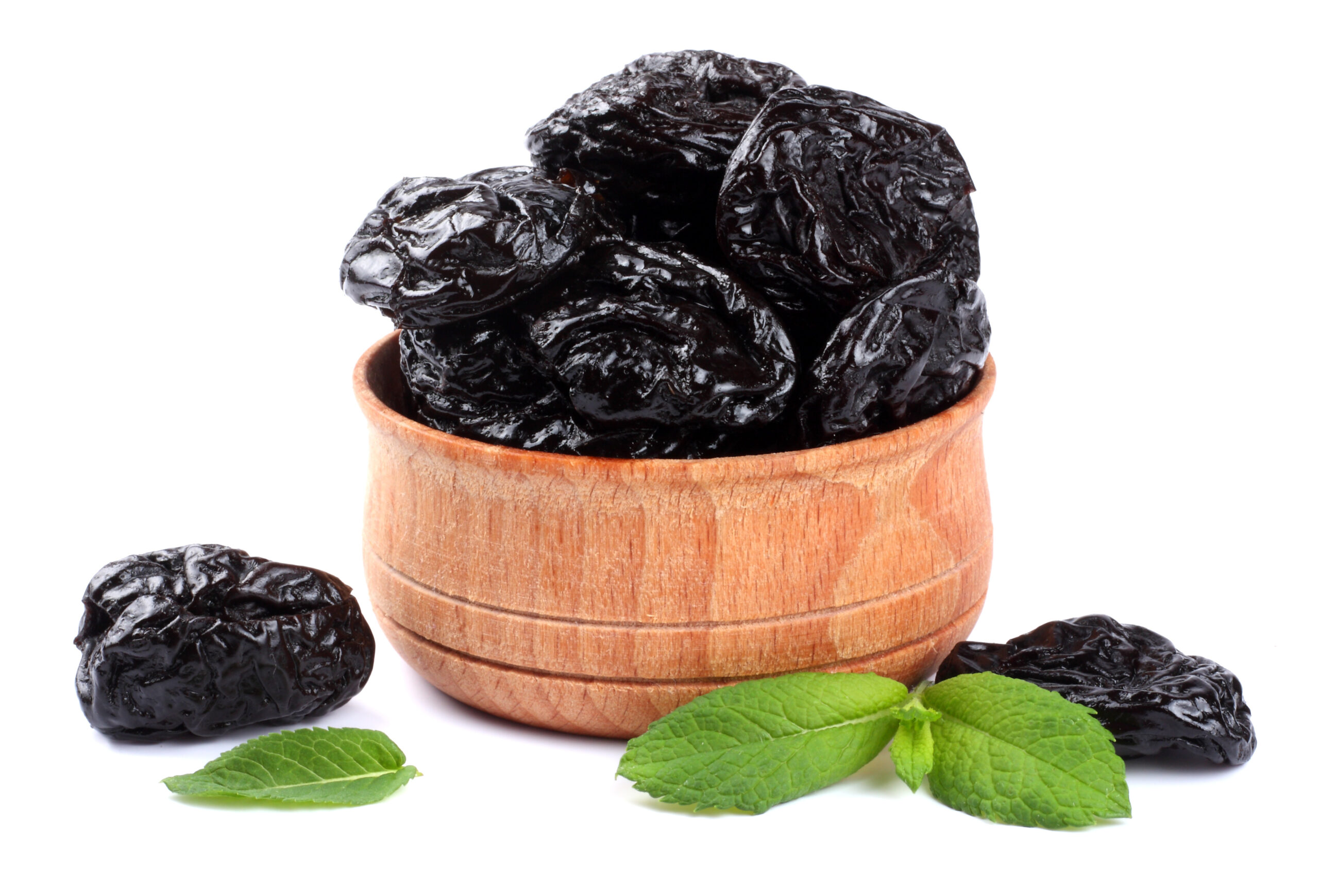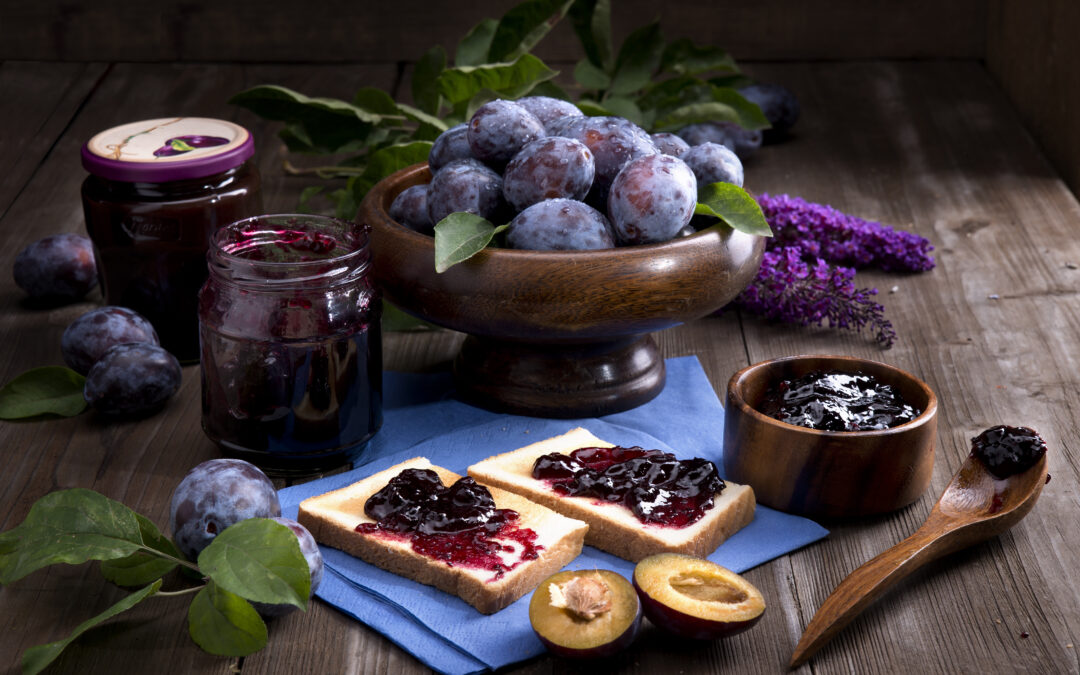OUR BLOG
GASTRONOMIC MIRROR: THE PLUM – SERBIA’S BLUE GOLD
It has given its name to many villages, towns, and people’s surnames. This fruit, celebrated in songs and referred to in legends and beliefs, is in every sense an inseparable part of the Serbian national identity. Our country is among the largest global producers and ranks first according to plums harvested per capita

The plum means much more to Serbia than the olive does to Greece, banana to Ecuador, grapevine to France, or apple to the United States. The plum is present in our everyday life, culture, folklore, and the economy. As an ingredient in homemade delicacies, as prunes or as rakija brandy, the plum has become an iconic national fruit. It can be found everywhere and is integral to almost any birth, coming-of-age, welcoming, celebration, farewell, even death. Deeply ingrained in the life and consciousness of the Serbian people, the plum is the most famous Serbian brand. In every sense – gastronomically, culturally, traditionally, economically – it is an inseparable part of the Serbian national identity.
Serbia is among the largest global plum producers and this crop that symbolises the fertility of the land, the hospitality of its people and the spirit of a nation that protects and preserves its heritage.

It is still customary today to build a house where plums grow best, as those places are considered the most favourable for living. In some parts of Serbia and Montenegro, on Christmas Eve, instead of oak branches, which is customary, people cut branches of plum trees and bring them into their homes. On Christmas Eve, it is also customary to serve prunes. We must not forget the slivovitz plum rakija. No celebration of the family slava, wedding, baptism, or even funeral service is considered complete without it. When it comes to customs, it is interesting to note that Serbs sometimes tend to make the sign of the cross before drinking a glass of rakija and that in the Serbian tradition rakija is used to treat different ailments – as rakija-soaked compresses to lower body temperature, as disinfectant, or for sudden stressful situations.
‘This is an ancient plant, cultivated, eaten and processed for centuries’, states author Petar Lazić in a unique monograph dedicated to this crop, entitled Plums, Bre. This book is a tribute and monument dedicated to the national fruit. ‘It is thought that it was Alexander the Great who introduced the most widely used plum variety to the Balkans, known locally as požegača or madžarka, when returning from his conquest of Persia in 333 BC. Romans praised plums as ‘noble fruit’. Plums have been a mainstay during the Middle Ages and during Ottoman rule. Its spreading over the Balkans can also be credited to Saint Clement of Ohrid, disciple of Methodius, who in his time popularised the cultivating of plums. Over time, plum cultivation took over the cultivation of other fruits, and viticulture slowly fell behind. That is why in old epic poems the protagonists always drink wine, and in later poems from the times of rebellions and uprisings, the beverage of choice is rakija’, Lazić writes.

The importance of the plum to the Serbian people is also evidenced by the many names of places, villages, hills, and valleys derived from the Serbian name for plum – šljiva, such as Šljivovica on Zlatibor, Šljivova near Krupanj, Šljivovac near Malo Crniće, and Šljivovik on mount Suva Planina. Serbia is full of people with family names such as Šljivić, Šljivančanin, Šljivak, Šljivkov, Šljivković.
Even though plums had been cultivated in Serbia for a very long time, there was a sudden expansion in the 19th century, when grapevines were attacked by the phylloxera pest. That is why Serbia soon became the largest producer of prunes in the world, which became our first exported product to the United States. In 1879, there was a record-breaking export of 30,000 tons of prunes to USA worth of 37 million dollars, which, coupled with the export of around 250,000 pigs to Austria-Hungary, brought Serbia a significant trade surplus.
Historians have also noted that after World War I, Serbia paid back its debt to France for the armaments in prunes and that between 1968 and 1977 the Socialist Federal Republic of Yugoslavia was responsible for 17.5% of global and 24.6% of European plum production, half of which was produced in Serbia. Even though some countries today harvest higher quantities, Serbia is still the global leader in one category – we are the country that produces the most plums per capita. Estimates show that around 38 kilograms are produced on average per person.
Discover more about Serbia’s ‘blue gold’ in our Dipos Magazine








 2018
2018